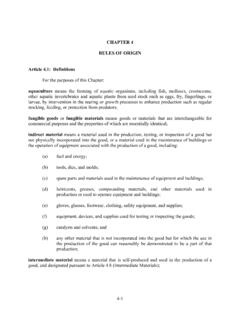Transcription of Origin and Evolution of Earth - National Academies Press
1 Origin and Evolution of EarthResearch Questions for a Changing PlanetQuestions about the origins and nature of Earth have long preoccupied human thought and the scientific endeavor. Deciphering the planet s history and processes could improve the abil-ity to predict catastrophes like earthquakes and volcanoes, to manage Earth s resources, and to anticipate changes in climate and geologic processes. This report captures, in a series of questions, the essential scientific challenges that constitute the frontier of Earth science at the start of the 21st is an active place. Earthquakes rip along plate boundaries, volcanoes spew fountains of molten lava, and mountain ranges and seabed are constantly created and destroyed. Earth scientists have long been concerned with deciphering the history and predicting the future of this active planet.
2 Over the past four decades, Earth scientists have made great strides in understanding Earth s workings. Scientists have ever-improving tools to understand how Earth s internal processes shape the planet s surface, how life can be sustained over billions of years, and how geological, biological, atmospheric, and oceanic processes interact to produce climate and climatic change. At the request of the Department of Energy, Na-tional Aeronautics and Space Administration, National Science Foundation, and Geological Survey, the National Research Council assembled a committee to propose and explore grand ques-tions in Earth science. This report, which is the result of the committee s deliberations and input solicited from the Earth science community, describes ten big picture Earth science issues being pursued today.
3 Answers to these fundamental questions could profoundly improve understanding of the planet on which we live and strategies for managing our How did Earth and other planets form? The Solar System is composed of a set of radically different types of planets and moons from the gas giants Jupiter, Saturn, Uranus, and Neptune to the rocky inner planets. Centuries of studying Earth , its neighboring planets, and meteorites have enabled the development of models of the birth of the Solar System. Astronomical observations from increasingly powerful telescopes have added a new dimension to these models, as have studies of asteroids, comets, and other plan-ets via spacecraft, as well as geochemical studies of stardust and meteorites. While it is generally agreed that the Sun and planets all coalesced out of the same nebular cloud, little is known about how Earth obtained its particular chemical composition, or why the other planets ended up so different from Earth and from each other.
4 For example, why has Earth , unlike every other planet, retained the unique properties such as the presence of water that allow it to support life ? New measurements of Solar System bodies and extrasolar planets and objects, will further advance understanding of the Origin of Earth and the Solar What happened during Earth s dark age (the first 500 million years)? It is now believed that during Earth s forma-tion, a Mars-sized planet collided with it, creating a huge cloud of debris that became Earth s Moon and releasing so much heat that the entire planet melted. But little is known about how the resulting molten rock evolved during the planet s infancy into the Earth we know today. The first 500 million years of Earth s existence, known as the Hadean Eon, is a critical missing link in understanding how the planet s atmosphere, oceans, and differentiated layers of core, mantle, and outer crust developed.
5 Scientists have almost no idea how fast the surface environment evolved, how the transition took place, or when condi-tions became hospitable enough to support life . Some clues from Earth s oldest minerals (zir-cons), as well as from Earth s Moon and other planets are allowing a clearer picture of the Hadean Eon to gradually emerge. The future is certain to provide additional breakthroughs. The amount of information that can be extracted from even the tiniest samples of old rocks and minerals is increasing rapidly, and with concerted effort, it is expected that many more ancient rocks and mineral samples will be found. 3. How did life begin? In The Origin of Species, Charles Darwin (1859) hypothesized that new species arise by the modifica-tion of existing ones that the raw material of life is life . But somehow and somewhere, the tree of life had to take root from nonliving precursors.
6 When, where, and in what form did life first appear? The Origin of life is one of the most intriguing, difficult, and endur-ing questions in science. Scientists have toiled to create life from sparks and gasses in the laboratory to illuminate how life first formed in Earth s early conditions. But even pinning down what those early conditions were remains an elusive goal. From what materials did life originate? Did life , as Darwin speculated, originate in a warm little pond, perhaps a tidal pool repeatedly dried and refreshed? Or might life be rooted among hydrother-mal vents? Could life s origins even lie beyond Earth ? Developing an accurate picture of the physical environments and the chemical building blocks avail-able to early life is a critical Earth science challenge. Clues to shed light on these mysteries stem largely from investigations of Earth s ancient rocks and min-erals the only remaining evidence of the time when Earth s life first emerged.
7 Earth s Interior4. How does Earth s interior work, and how does it affect the surface? As planets age and cool off, their internal and surface processes gradually change. Manifestations of changes within Earth s interior such as the develop-ment of mountains and volcanoes have a huge influ-ence on the nature of Earth s surface and atmosphere. Scientists know that much of the rock in the Earth s mantle (the thick layer between the core and crust), which is under extreme pressure and very high temperature, behaves like a viscous liquid. This vast interior, however, is largely inaccessible to direct study. For over a century, seismic wave, geomagnetic, and gravity measurements made at the surface have been improving understanding of Earth s internal structure. Despite continuing advances, however, scientists are only beginning to explore the connec-tions between Earth s core, magnetic field, mantle, and surface and to investigate why Earth differs from other planets, or how it may change in the Why does Earth have plate tectonics and continents?
8 A major focus of Earth science has been on deciphering the nature of the continents the features that make Earth habitable for land-dwelling life . How and when did the continents form? How have they changed? Why do the Atlantic coastlines of South America and Africa look like pieces of a puzzle? Plate tectonics the description of Earth s outermost layers in terms of a small number of large Stromatolites, like this one from Siberia, provide clues about the emergence of life on Earth . These patterned rock formations were built by the trapping and building of sediment particles by Earth s early microbial commu-nities. Courtesy of Andrew Knoll, plates in relative motion has offered many breakthrough insights since it became a central para-digm for geology nearly 40 years ago. The motion of tectonic plates and interactions at their boundaries are now known to be a driving force behind earthquakes, volcanic eruptions, the formation of mountains, and the slow drift of continents over Earth s surface.
9 Although plate tectonic theory explains many of Earth s surface features, it is not known why Earth has plates or what the relationships are between plate tectonics and Earth s abundant water, continents, and the existence of life . Answering such questions will require improved models, studies of modern plate boundaries, and comparisons with other planets. 6. How are Earth processes controlled by material properties? It s the little things that make all the difference. Scientists now recognize that large-scale processes on Earth , such as plate tectonics, are driven by the nature of the materials that make up the planet down to the smallest details of their atomic structures. The high pressures and temperatures of Earth s interior, the enormous size of the planet and its structures, the long expanse of geological time, and the vast diversity of materials present challenges to studying Earth materials.
10 Break-throughs in this area are now at hand, however; new analytical tools and advanced computing capabilities are improving the study and simula-tion of Earth materials at the atomic level and promise to improve predictions of how these ma-terial properties will affect planetary processes. Earth s Climate & Habitability7. What causes climate to change and how much can it change? It is widely recognized that Earth s mean global surface temperature has risen since the beginning of the industrial age, and that emis-sions of CO2 and other greenhouse gases are at least partly responsible. The potentially serious consequences of global warming underscore the need to determine how much of the warming is caused by human activities and what can be done about it. Earth science has an important role in answering both geological record has revealed the history of the planet s climate to be a peculiar combination of both variability and stability.













